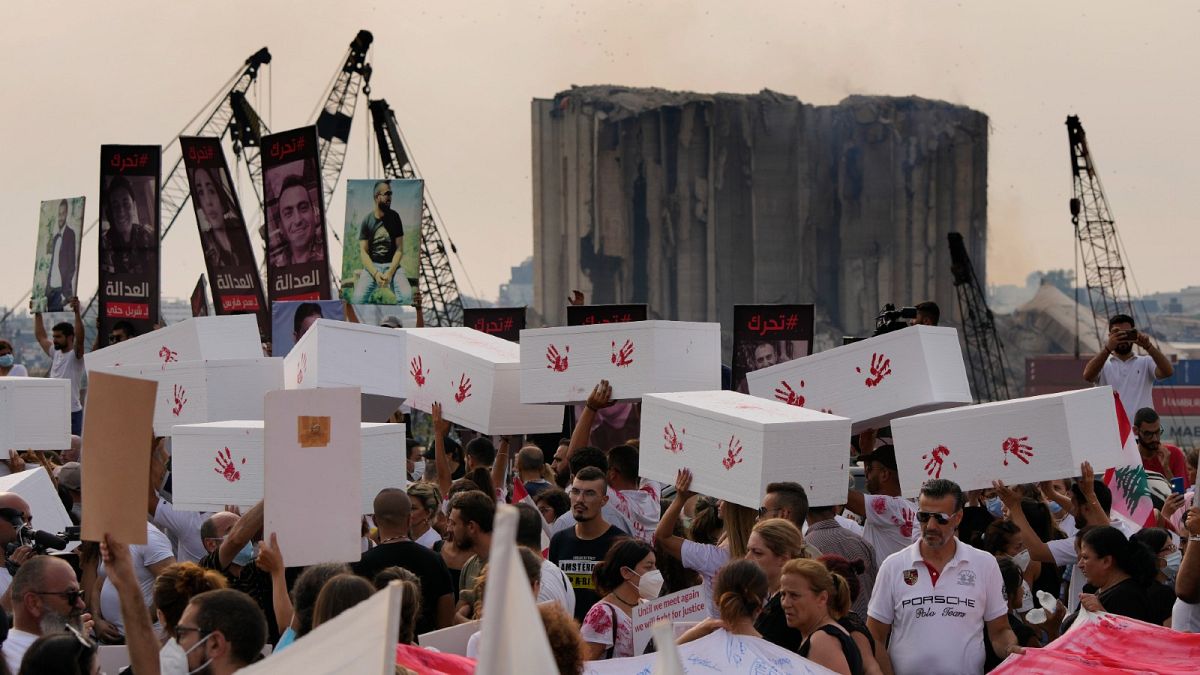Beirut's collapsing silos and the fading memory of a tragedy
I knew I was going to arrive in Lebanon at a crucial time.
That’s part of the reason why I decided to visit during the first week of August as it marked the second anniversary of the explosion at Beirut port that killed more than 250 people.
And just a few hours prior to my departure, a part of the giant silos’ remaining structure fell to the ground.
Friends of mine had warned me about that. One of the many health alerts I had received stated that "according to media reports, sensors at the silos damaged by the Port of Beirut blast indicate that the structure is tilting at an increasing rate and can collapse at any time."
That meant a few rules had to be followed: avoid the area surrounding the port and if indoors close the windows; and wear a mask when outside.
As I got to Beirut my priority was to visit the site and as the anniversary approached, I saw several television crews hanging around using the silos backdrop for live reports. Yet getting close to the silos wasn't possible and the closer I could get with a decent angle was on a section of the highway facing the silos.
There, I met an activist campaigning on behalf of the families of the victims of the 4 August 2020 blast who told me that "we should protect" the silos.
"The relatives of the victims wanted it to be here," he said. "It’s their right to see it here", he went on, "so that if we pass from here we remember what has happened to us."
Fari's message is the one shared by many who have been calling to preserve the structure and turn it into a memorial as a living testimony of the collapse. For those still grieving the loss of their departed loved ones, whose pictures adorn a wall facing the silos, it symbolises a stark reminder of the negligence of Lebanon’s ruling class.
A protest was scheduled to take place on 4 August but I got different takes on what to expect. A local television producer told me that "not many people will be attending" whereas Farid said that "many people will be here you’ll see – you’ll be surprised".
I guess the difference between the two versions speaks volumes about the fact that staging such protests doesn’t come easy and that perhaps after two years most of these families feel exhausted.
And, I figured, it must be very difficult for many to sustain the burden of the tragedy while having to cope with one of the worst financial crises the country has ever experienced.
Yet, the two things are connected, if only because after the explosion Lebanon holds no strategic stockpile of grains.
The war in Ukraine has increased the strain, driving hunger in a country already hit by years of financial and political instability. According to Unicef, 80% of the wheat in Lebanon comes from Russia and Ukraine.
A dire reality that becomes even more serious when you speak to locals.
Most shops that rely on privately-shared neighbourhood generators have to shut early, which I experienced myself a couple of times with the light switching off all of a sudden at 4pm in the afternoon.
It’s not the same for hotels that can afford those generators to stay on for longer but for people like my taxi driver who cannot afford it, they can only count on two, three hours of state electricity per day.
On the financial front, banks don’t exist anymore and when exchanging dollars into the local currency choosing the right place to do it it’s a must. The Lebanese Lira disintegrated in value losing more than 15% of its purchase power since the beginning of the year.
As I drove around the city I could see many buildings bearing the marks of the blast as not all of them have been rebuilt since.
With just a day to go before protests were to take place across the city to mark the second anniversary, local institutions issued multiple warnings that a new collapse would have taken place and we took the decision to leave town.
Pictures on social media platforms showed that hundreds of people took the streets on the 4th of August 2022.
But what turned this demonstration into a much more symbolic event was the collapse of a pair of grain silos happening right in front protesters’ eyes as they marched on the streets.
